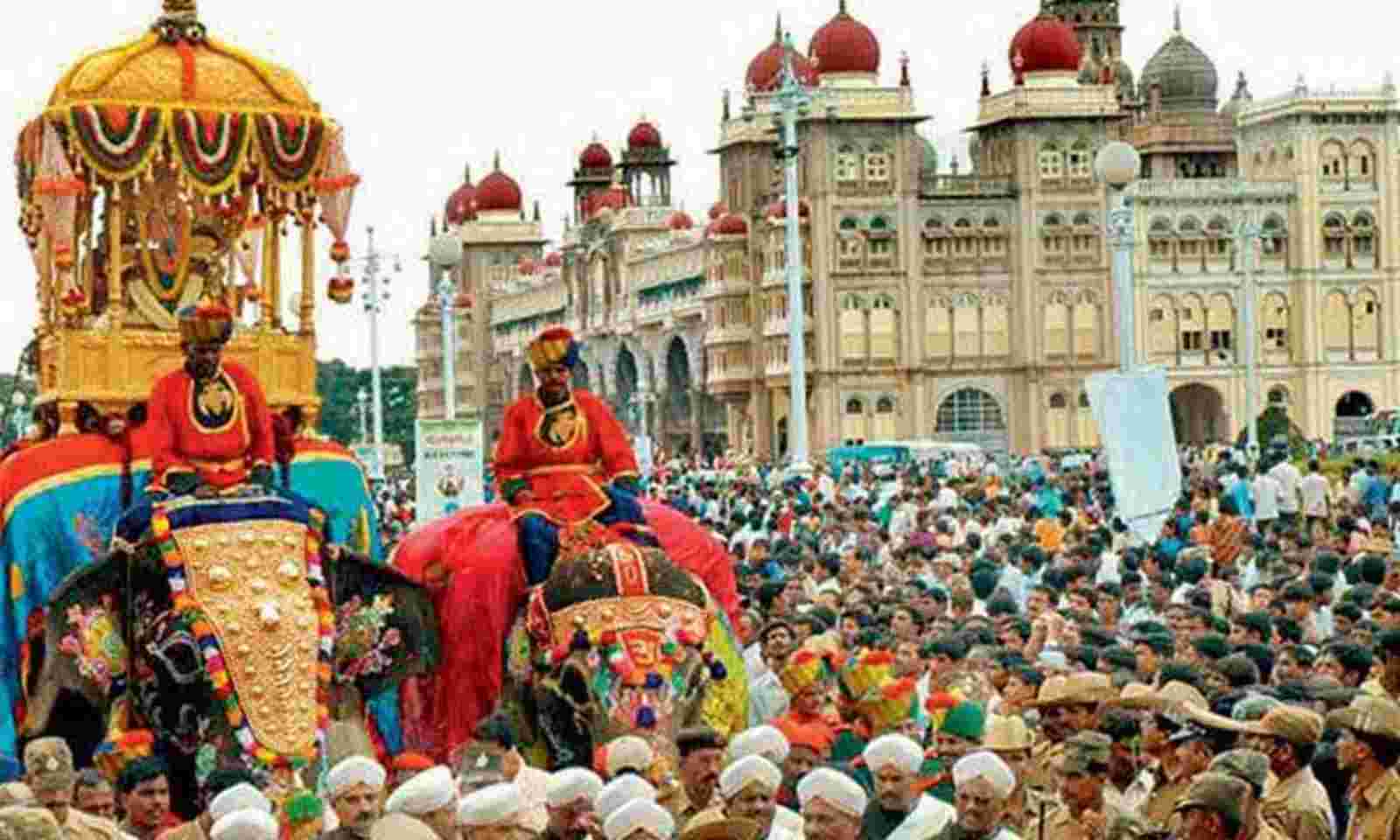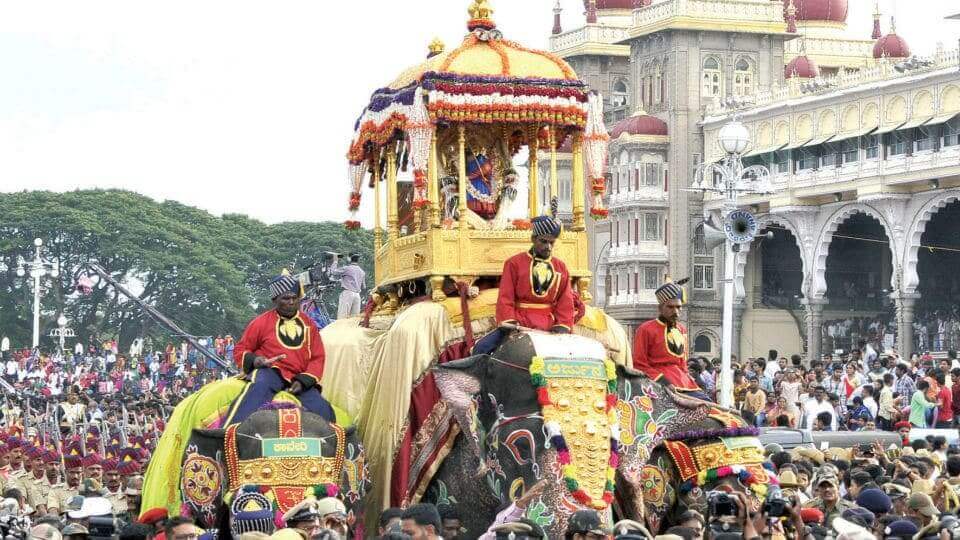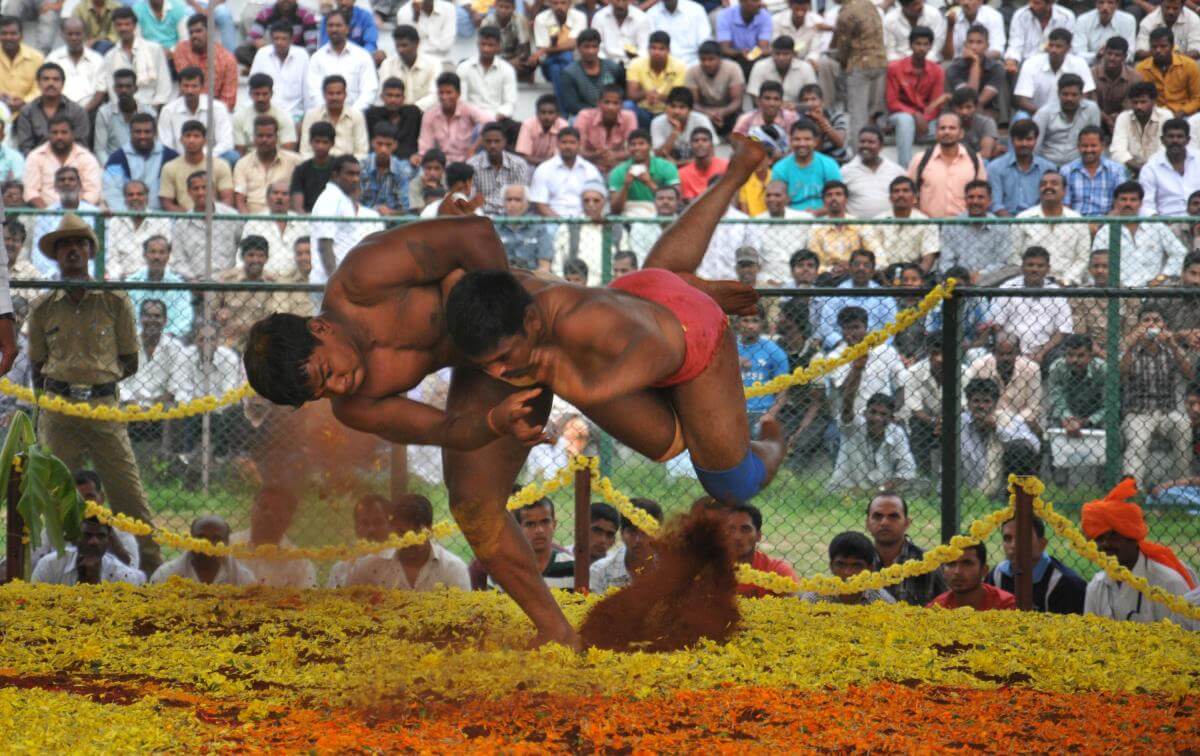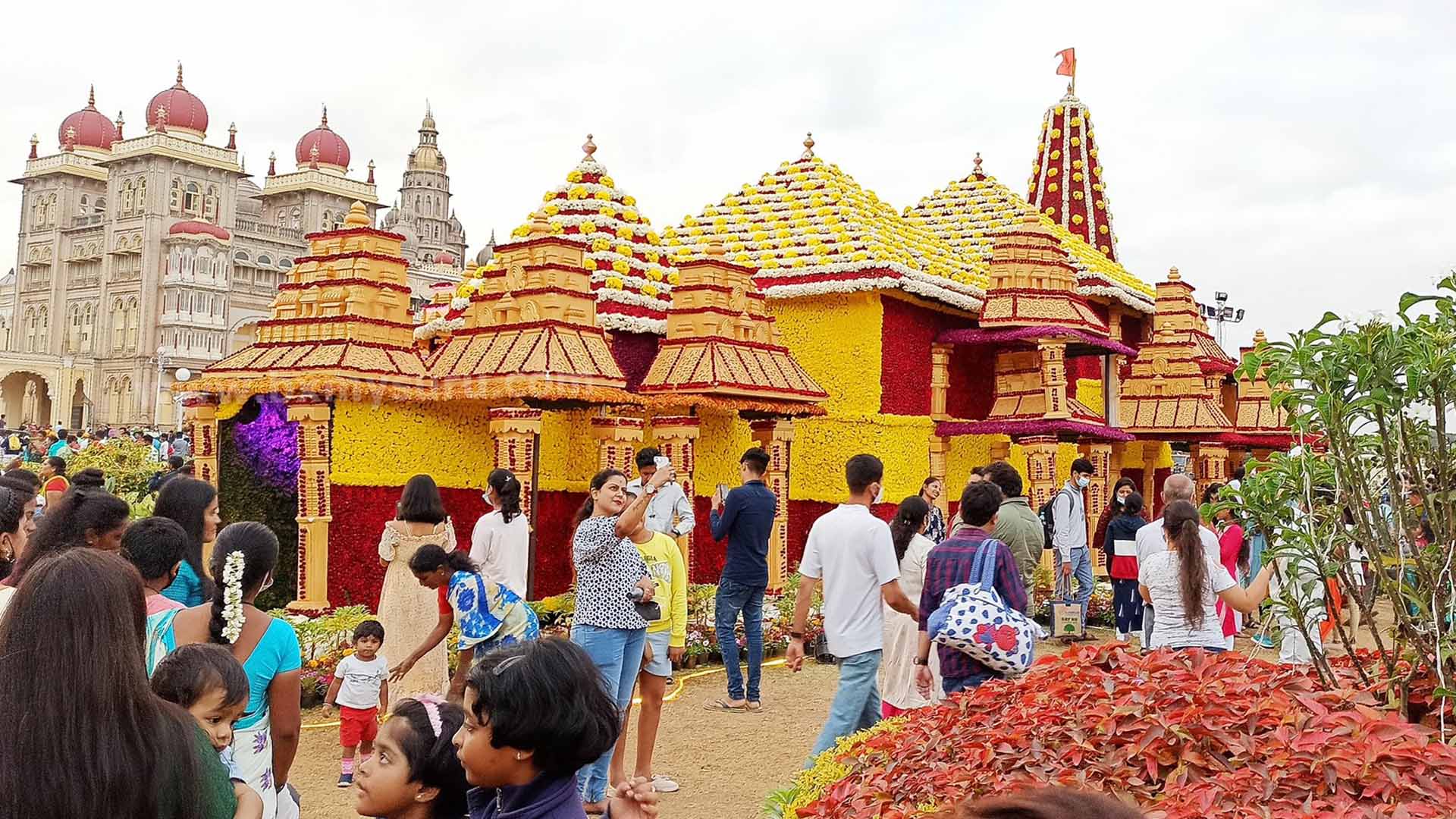The Nadahabba (state festival), also called Mysore Dasara, is the grandest of all festivals in Mysore. The 10-day long festival, which takes place in September or October, is celebrated with great pomp and grandeur. The celebrations start with the nine nights of Navratri and end on the tenth day called Vijayadashami. The Hindu festival celebrates the victory of good over evil. In Mysore, it is considered to be the day that the goddess Chamundeshwari killed the demon Mahishasura.
According to tradition, the Mysore royal family worships the goddess Chamundeshwari in her warrior form. All the implements and animals employed during wars, like weapons, elephants, horses, and the royal sword are worshipped. The festivities are kick-started with a ritual puja by the reigning Wadiyar king and other members of the royal family. The celebrations include athletic competitions, singing and dancing concerts, fireworks and bike parades. The kushti spardhe (wrestling competition) is one of the major attractions of the Mysore Dasara, which attracts wrestlers from all across the country.
The Dasara Exhibition is another big attraction of Mysore Dasara. The exhibition was started in 1880 by Chamaraja Wadiyar X to introduce new developments to his people. Today, the exhibition has various stalls selling clothes, plastic items, kitchenware, cosmetics and different kinds of food. The exhibition also has a play area and an amusement park with a Ferris wheel and several other rides.
The main attraction of the Mysore Dasara is the grand procession, also called the Jumbo Savari, on the city streets. The procession includes decorated elephants, horses and camels with several colourful tableaux, dance groups and music bands. The highlight of the parade is the idol of the goddess Chamundeswari, which is placed inside a golden howdah and carried by the lead elephant. The procession ends at the Banni Mantapa with a puja to the banni tree (prosopis spicigera), followed by a torchlight parade.
Like the Mysore Palace, the streets of the city are bedecked with thousands of lights, turning Mysore into a fairytale land. The people of Mysore also decorate their homes with colourful rangolis and flowers and perform pujas at home. The Gombe Habba or Dasara Gombe Puja (doll festival) is a tradition that is observed by most Hindu households. According to tradition, various dolls made of clay or wood are placed on a stepped platform. These dolls usually are small idols of Hindu gods and goddesses along with dolls of kings and queens and other human beings belonging to different professions. The dolls representing a shopkeeper and his wife are a must on this platform. Some displays also include famous personalities including freedom fighters, politicians and cricketers. The Gombe Thotti (doll’s pavilion) in the Mysore Palace has the most extensive collection of dolls from the 18th and 19th centuries.





![MYSURU [MYSORE] DASARA 2024 – ALL INFORMATION](https://bxmysuru.com/wp-content/uploads/2024/08/MYSURU-DASARA-2024.webp)